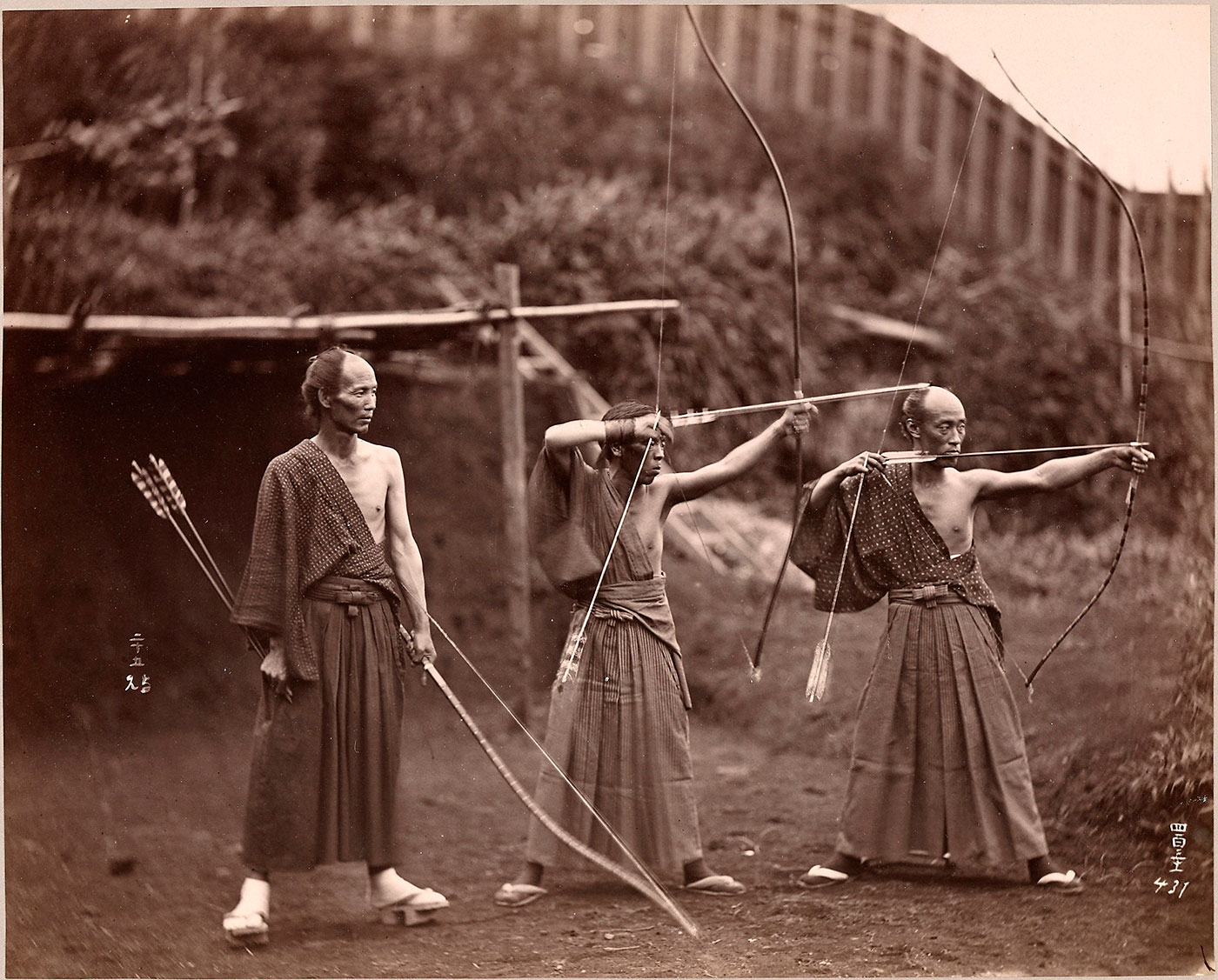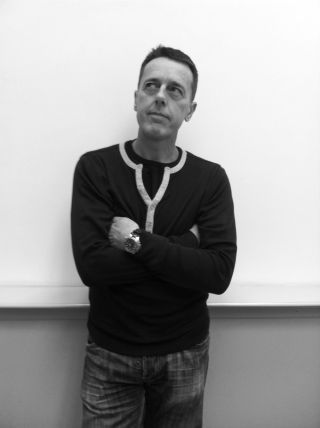Mastering Zanshin: The Legendary Samurai Archer's Secret to Unwavering Focus in 2025
Discover Zanshin, the ancient samurai art of sustained attention and relaxed alertness. Learn how a legendary samurai archer's wisdom can transform your productivity and focus in today's distracting world.

In an era of endless notifications and digital distractions, the ability to maintain unwavering focus feels like a lost art. We constantly seek new hacks for productivity, yet often overlook timeless wisdom. Enter Zanshin, a profound concept from Japanese martial arts, exemplified by a legendary samurai archer, that offers a powerful antidote to modern fragmentation. It’s more than just focus; it’s a state of complete, effortless awareness that can revolutionize how you approach every task, from daily chores to ambitious goals.
Why Zanshin Matters More Than Ever in 2025
The digital landscape of 2025 presents unprecedented challenges to our attention spans. With remote work, constant connectivity, and the rise of AI-driven information streams, our minds are under siege from distractions (Pew Research Center, 2018). Studies suggest that the average human attention span has significantly decreased, impacting deep work and critical thinking (Microsoft Canada, 2015). This constant mental fragmentation erodes productivity and leaves us feeling perpetually overwhelmed.
Zanshin offers a powerful counter-narrative. It’s not about forcing attention, but cultivating a relaxed alertness that allows for sustained engagement. In a world where mental resilience is a premium, understanding and applying Zanshin can be the key to reclaiming your cognitive power and achieving true mastery in any field. It’s about being fully present, not just physically, but mentally and emotionally.
The Science Behind Effortless Vigilance: Understanding Zanshin
Zanshin, literally translated as “the mind with no remainder,” refers to a state of complete, unwavering focus on the task at hand, while simultaneously maintaining a broad awareness of one’s surroundings. It’s an effortless vigilance, where the mind is fully engaged without being stressed or rigid. This concept finds echoes in modern psychology, particularly in the study of flow states and sustained attention.
Psychologists define ‘flow’ as a mental state in which a person performing an activity is fully immersed in a feeling of energized focus, full involvement, and enjoyment in the process of the activity (Csikszentmihalyi, 1990). Zanshin embodies this, pushing it further by integrating a constant, relaxed awareness that extends beyond the immediate action. It’s about the internal state that enables flow, making it a sustainable practice rather than a fleeting experience.
The story of Eugen Herrigel and the legendary samurai archer Awa Kenzo perfectly illustrates this. Herrigel, a German philosophy professor, trained in Kyudo, Japanese archery, under Kenzo. For years, Kenzo insisted Herrigel focus solely on the process of archery, not the target, even limiting him to shooting at a straw roll just seven feet away. When Herrigel finally shot at distant targets, his performance was dismal. Kenzo’s profound insight was that success wasn’t about aiming, but about the approach—the complete integration of body and mind.
One evening, Kenzo demonstrated this by hitting a double bullseye in complete darkness, proving that his mastery came from an internal, process-driven awareness. This complete awareness of the body and mind in relation to the goal, an internal ‘aiming,’ is the essence of Zanshin. It’s a testament to how deeply ingrained true focus can become, transforming external results into mere byproducts of an impeccable internal state.
5 Proven Strategies to Cultivate Zanshin for Peak Performance
Cultivating Zanshin isn’t about grand gestures; it’s about integrating mindful awareness into your daily routine. Here are five actionable strategies:
- Embrace Deliberate Practice with Intentional Breaks: Instead of endless hours, focus on shorter, intense bursts of work (e.g., 25-minute Pomodoro sessions) followed by mindful breaks. During these breaks, resist the urge to immediately check your phone. Instead, observe your surroundings, stretch, or simply breathe. This trains your mind to shift between intense focus and relaxed awareness, a core tenet of Zanshin. Research on deliberate practice highlights the importance of focused effort and immediate feedback for skill acquisition (Ericsson, 2016).
- Ritualize Your Transitions: Just as the legendary samurai archer Kenzo had a precise routine before each shot, create simple rituals for starting and ending tasks. This could be brewing a cup of tea before deep work, tidying your desk after a project, or a few deep breaths before a meeting. These rituals signal to your brain a shift in focus, preparing it for Zanshin-like engagement.
- Practice Single-Tasking Relentlessly: In a multitasking world, choose one task and commit to it fully for a set period. Turn off notifications, close unnecessary tabs, and resist the urge to switch. If your mind wanders, gently bring it back to the task, much like a meditation practice. This strengthens your ‘attention muscle’ and reduces cognitive switching costs, which can decrease productivity by up to 40% (American Psychological Association, 2001).
- Adopt the ‘Tighten Your Helmet’ Philosophy: A Japanese proverb advises, “After winning the battle, tighten your helmet.” This embodies Zanshin as sustained vigilance. After achieving a small victory—finishing a report, hitting a fitness goal, or making a sale—don’t immediately relax your commitment. Instead, reflect on the process, identify areas for continued improvement, and prepare for the next challenge with renewed focus. This prevents complacency, the true enemy of sustained improvement.
- Cultivate Sensory Awareness in Daily Activities: Zanshin extends beyond formal tasks. When walking, notice the sensation of your feet, the sounds around you, the air on your skin. When eating, savor each bite. This practice of bringing full sensory awareness to mundane activities trains your mind to be present and observant, building a foundation for deeper focus when it truly matters. It transforms passive existence into active engagement.
Common Pitfalls on the Path to Zanshin
While the concept of Zanshin seems straightforward, several common mistakes can hinder its development:
- Obsession with Outcomes: Like Herrigel, many become fixated on hitting the target, neglecting the process. This external focus creates anxiety and undermines the relaxed, internal awareness essential for Zanshin. True mastery comes from perfecting the journey, not just reaching the destination.
- Mistaking Busyness for Productivity: Constantly being ‘on’ or juggling multiple tasks without deep engagement is the antithesis of Zanshin. It leads to superficial work and mental fatigue, rather than profound focus and presence. Quality over quantity is paramount.
- Lack of Self-Compassion: Learning Zanshin is a journey, not a destination. Becoming frustrated with perceived failures or wandering thoughts only creates internal resistance. Approach your practice with patience and kindness, acknowledging that lapses are part of the learning process.
- Ignoring the ‘Relaxed’ Aspect: Some interpret Zanshin as intense, rigid concentration. However, the ‘relaxed alertness’ is crucial. Tension hinders optimal performance. Remember, Awa Kenzo’s mastery was effortless, a natural extension of his integrated being.
Advanced Applications: Beyond the Bow and Arrow
Zanshin isn’t confined to martial arts or individual productivity; its principles scale to leadership, team dynamics, and complex problem-solving. In a leadership context, Zanshin means being fully present in conversations, understanding team dynamics with peripheral awareness, and making decisions with both immediate and long-term implications in mind. It fosters a proactive, rather than reactive, approach to challenges.
For creative endeavors, Zanshin means immersing yourself in the creative process without being overly attached to the final product. It’s the artist fully absorbed in their brushstrokes, the writer lost in the flow of words, or the musician intuitively connecting with their instrument. This state allows for breakthrough insights and sustained creative output, demonstrating that the ‘process is everything’ applies universally, as articulated by Kenneth Kushner: “One should approach all activities and situations with the same sincerity, the same intensity, and the same awareness that one has with bow and arrow in hand.”
Your Next Steps: An Action Plan for Zanshin Mastery
Ready to integrate the wisdom of the legendary samurai archer into your life? Here’s a simple action plan:
- Choose One Daily Activity: Select a routine task (e.g., brewing coffee, walking, washing dishes). For the next week, commit to performing this task with complete sensory awareness and presence.
- Implement a Focus Block: Dedicate 30-60 minutes each day to a single, important task. Eliminate all distractions. If your mind wanders, gently redirect it back. Use a timer to reinforce this discipline.
- Practice Mindful Transitions: Before starting a new work block or moving between activities, take 3 deep breaths. Use this as a mental reset to signal a change in focus.
- Reflect on Your Process, Not Just Results: At the end of each day, instead of solely reviewing what you accomplished, consider how you approached your tasks. Where did you feel present? Where did you lose focus? This self-assessment fosters continuous improvement.
- Read “Zen in the Art of Archery”: While not required, Herrigel’s book provides deeper context and inspiration for the concepts discussed, offering a foundational understanding of Zanshin from a historical perspective.
Frequently Asked Questions
What is the core principle of Zanshin?
The core principle of Zanshin is ‘the mind with no remainder’ – a state of relaxed alertness and complete, effortless focus on the task at hand, while maintaining a broad awareness of one’s surroundings. It emphasizes the importance of process over outcome.
How does Zanshin differ from simple concentration?
While concentration is a component, Zanshin goes beyond simple concentration by adding an element of ‘relaxed alertness’ and ‘continuous awareness.’ It’s not a rigid, forced focus, but an effortless, sustained presence that extends even after an action is completed, embodying the ‘tighten your helmet’ philosophy.
Can Zanshin be applied to modern professional life?
Absolutely. Zanshin is highly applicable to modern professional life, enhancing deep work, decision-making, and leadership. By cultivating intentional focus, minimizing distractions, and valuing the process of work, professionals can achieve higher quality output and greater mental resilience, especially in fast-paced environments.
Key Takeaways
The timeless wisdom of Zanshin, as exemplified by the legendary samurai archer Awa Kenzo, offers a powerful framework for navigating the complexities of modern life. It’s a call to embrace relaxed alertness, commit fully to the process, and recognize that true mastery stems from the way we approach every task. By cultivating ‘the mind with no remainder,’ we can unlock deeper focus, enhance our productivity, and live with greater intention and purpose. Remember, everything is aiming, and the journey itself is the ultimate reward.
About Noah Patel
Financial analyst turned writer covering personal finance, side hustles, and simple investing.
View all articles by Noah Patel →Our content meets rigorous standards for accuracy, evidence-based research, and ethical guidelines. Learn more about our editorial process .
Get Weekly Insights
Join 10,000+ readers receiving actionable tips every Sunday.


